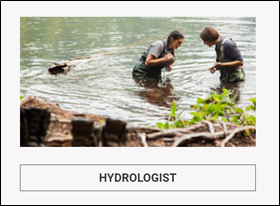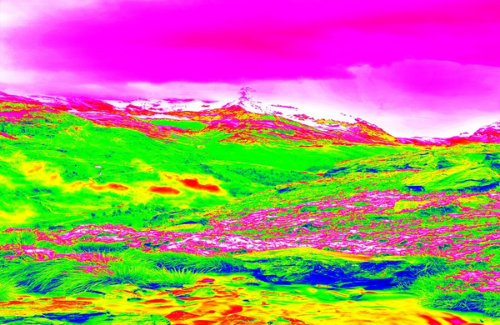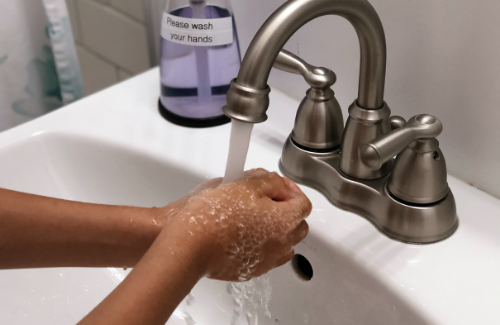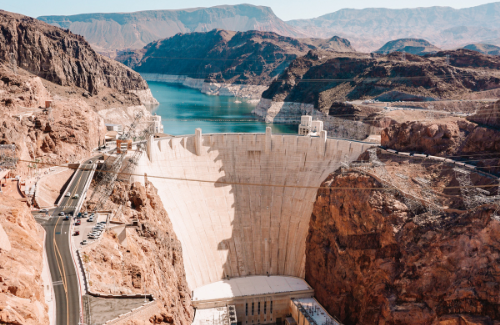Water is essential to all living organisms. Use Project Learning Tree’s Water Wonders activity to help students learn about the many different journeys a water molecule may take. Then use these STEM enrichment ideas to further explore our water use, civil engineering projects, green careers focused on water, and more. Water Wonders can be found in PLT’s Explore Your Environment: K-8 Activity Guide and/or PLT’s PreK-8 Environmental Education Activity Guide. Be sure to check out the full activity!
Essential Question: What does water do for us?
Task: Examine one water-focused career and execute a related design challenge (from dam building to culvert design and more
NGSS Connections:
- 3-5-ETS1-1: Engineering Design – Define a simple design problem reflecting a need or a want that includes specified criteria for success and constraints on materials, time, or cost.
- 5-ESS3-1: Earth and Human Activity – Obtain and combine information about ways individual communities use science ideas to protect the Earth’s resources and environment.
- MS-ETS1-4: Engineering Design – Develop a model to generate data for iterative testing and modification of a proposed object, tool, or process such that an optimal design can be achieved.
STEM Strategies
 Science:
Science:
How would you like to have a job that lets you work in the water? If this interests you, then you should consider a career as a hydrologist.
Hydrology is the study of water, and a hydrologist studies water quantity and quality of both above and below the ground sources, and how the functions of the water cycle are influenced by human activity and natural processes. A career as a hydrologist can include working as a climatologist, environmental geologist, oceanographer, or hydrogeologist. Possible employers include:
- Federal, state, or local governments
- Management, scientific, and technical consulting companies
- Private companies that provide engineering services
Download PLT’s Hydrologist Green Job Fact Sheet to learn more about the skills required, recommended coursework, and average salaries. Visit www.plt.org/workingforforests for more Green Job Fact Sheets and try a free Green Jobs Personality Quiz.
 Technology:
Technology:
There are many tools used in the science of hydrology. The advancement of technology has increased the ability of hydrologists to do their jobs with not only with increased accuracy, but also in less time.
For example, satellites with infrared cameras can measure water temperature. This helps hydrologists and meteorologists determine water source and predict weather patterns. Recent satellite observations have detected a thinning of the Greenland ice sheet at lower elevations. A partial melting of this ice sheet would cause a 1-meter (3-foot) rise. Have a look at NASA’s Climate Time Machine, which offers a series of visualizations on how some of Earth’s key climate indicators are changing over time. The Seal Level interactive display shows the effect on coastal regions for each meter of sea level rise, up to 6 meters (19.7 feet) for four specific areas across the globe (Southeast United States, Northern Europe, Amazon Delta, and Southeast Asia).
Take a look at the wide variety of tools hydrologists employ in the field. Note that hydrologists also use simple tools when collecting data. Rulers help measure water height and soil erosion. Scales can help assess soil density in calculating and comparing weight differences that result from the presence (or absence) of water.
Engineering:
Dams, large and small, are constructed to hold back water. The water reservoir that dams create can be used for many things – including drinking, recreation, irrigation, and more. Some of the largest dams – such as the Hoover Dam pictured here, outside of Las Vegas, Nevada – are constructed for the purpose of producing electricity, or hydropower. Dams have been constructed around the world, with the oldest operational dam dating back to around 1304 BC.
The construction of a dam has impacts on wildlife, especially fish species that migrate up a river to spawn. Dams form physical barriers that reduce the ability of fish to move up and downstream. For a design challenge, try to build and test your own dam using simple materials or learn more about how engineers are designing fish-friendly structures to help migrating fish.
Also check out this Stream Crossing unit plan and grading rubric draft, developed by Susan Linscott for Lee Academy in Maine. Linscott’s unit on Stream Crossings begins with a presentation from a local forester, who presents an overview of why stream crossings are important, their structure and the loads they need to support, and the costs and environmental impacts. Students conduct a survey to analyze culverts (tunnels that carry a stream under a road) in their area. They then assume the role of engineers. Using materials that range from scrap lumber to soda bottles, they design models that would have to minimize environmental impacts while also withstanding weight.
 Math:
Math:
Many people believe that our water supply is infinite. However, our water supply is quite the opposite. Only about 3% of Earth’s water is freshwater and of that, only just over 1% can be used as drinking water. The rest is locked up in glaciers, ice caps, and permafrost, or buried deep in the ground.
Did you know that you can take action to help conserve water in your own home? The first thing you might do is examine all the faucets and shower head. First, be sure to fix any leaks. Next, take some time to determine the flow rates. Knowing this information (movement of water in terms of gallons per minute) will help you determine if a low-flow faucet is installed. With the help of a handy adult, consider replacing commonly used faucets with low-flow alternatives.
To determine flow rate from a faucet in your home, place a bucket or other catch basin under the water stream and turn on the water. Run the water for a determined amount of time such as 5, 10, or 15 seconds. Using a measuring cup, carefully measure the volume of water and record this number.
- If you collected water for 5 seconds, how much water would you expect to collect in one minute?
- Try a few experiments using 5, 10, and 15 second collection times and then compare your results in terms of gallons per minute.
- How might you use a sample water bill to correlate the gallons saved by low-flow faucets to dollars spent on your household’s water bill?
- Finally, use your math skills to price match low-flow faucet options available and use your powers of persuasion to make your recommendation to the head of your household!
Additional PLT Resources Available for Free
- Conserve Water At Home. Download this free family activity to identify more ways to reduce water use inside your house and outside your house.
- GreenSchools Water Investigation. Students can investigate the source, cost, and quality of their school’s water supply, and ways to enhance current water conservation practices using PLT’s Water Investigation, one of five investigations at the heart of PLT’s GreenSchools program that bolster STEM learning.




